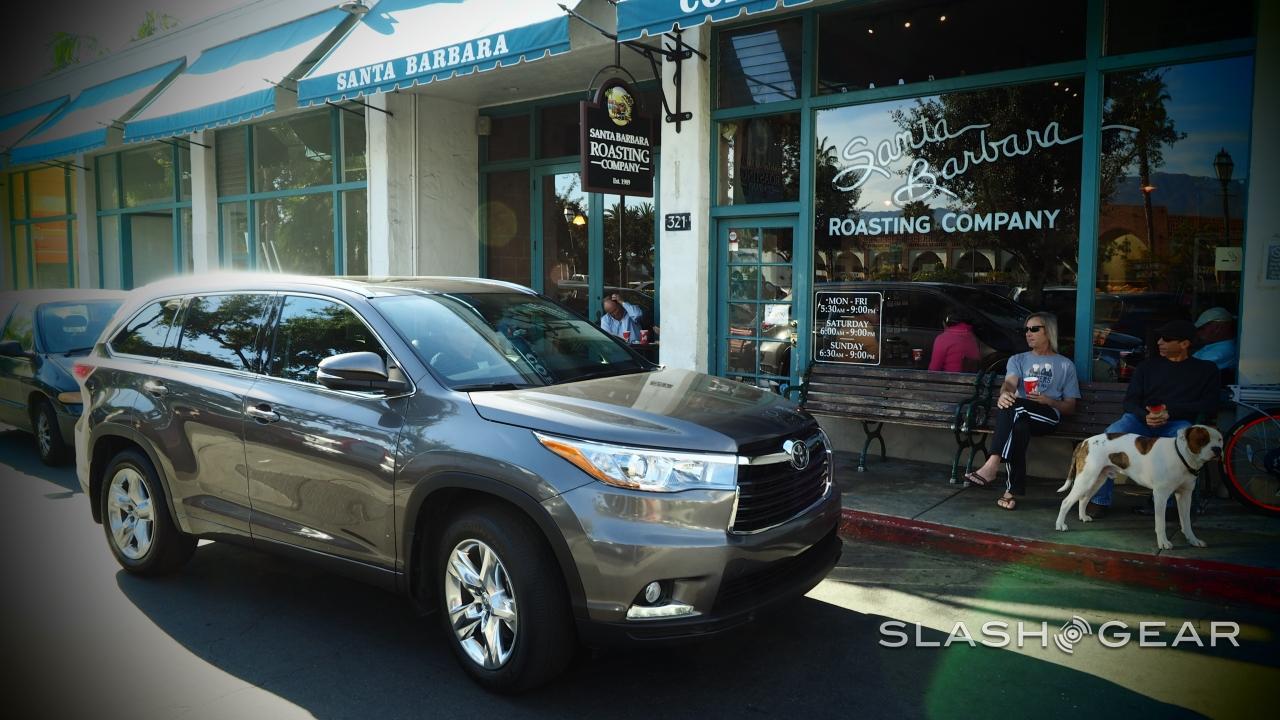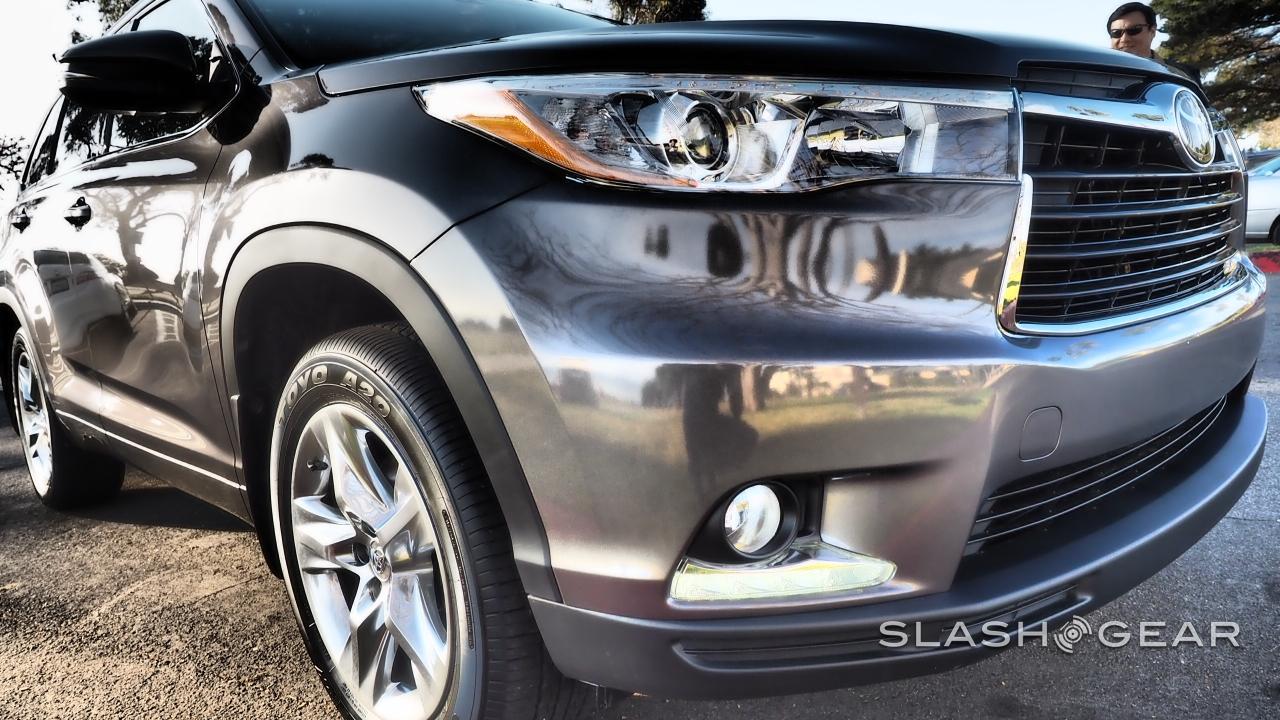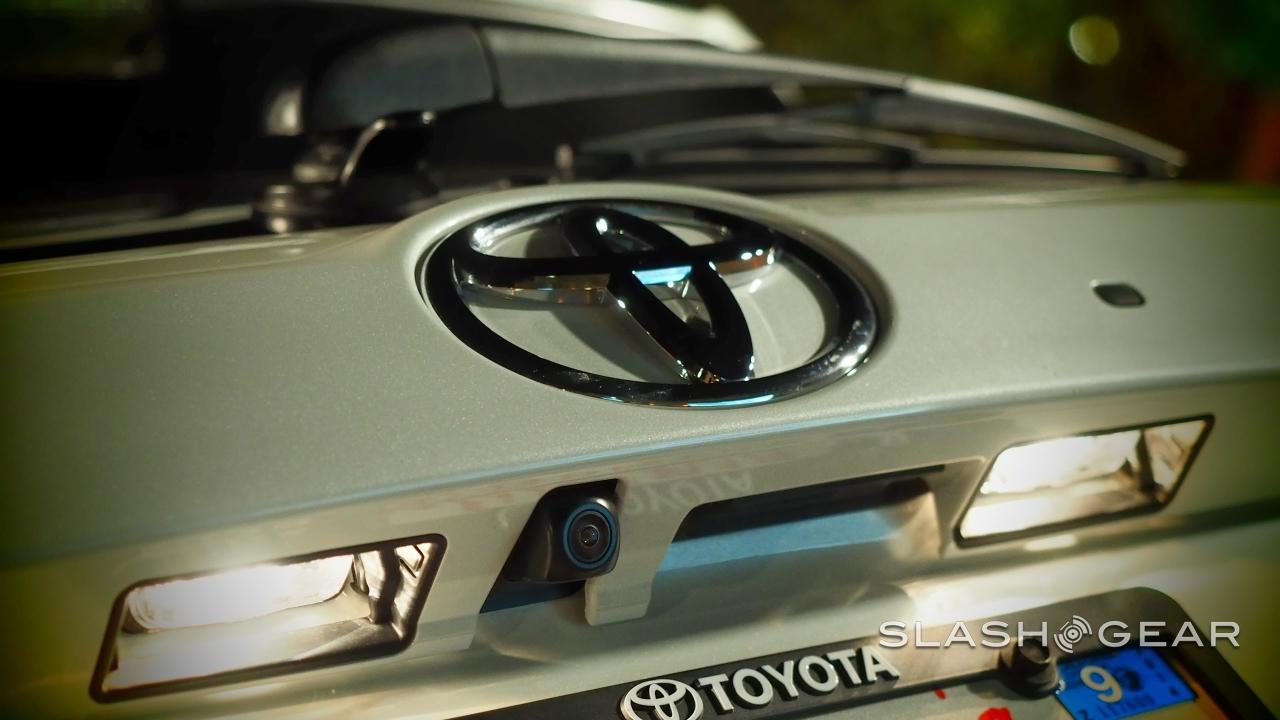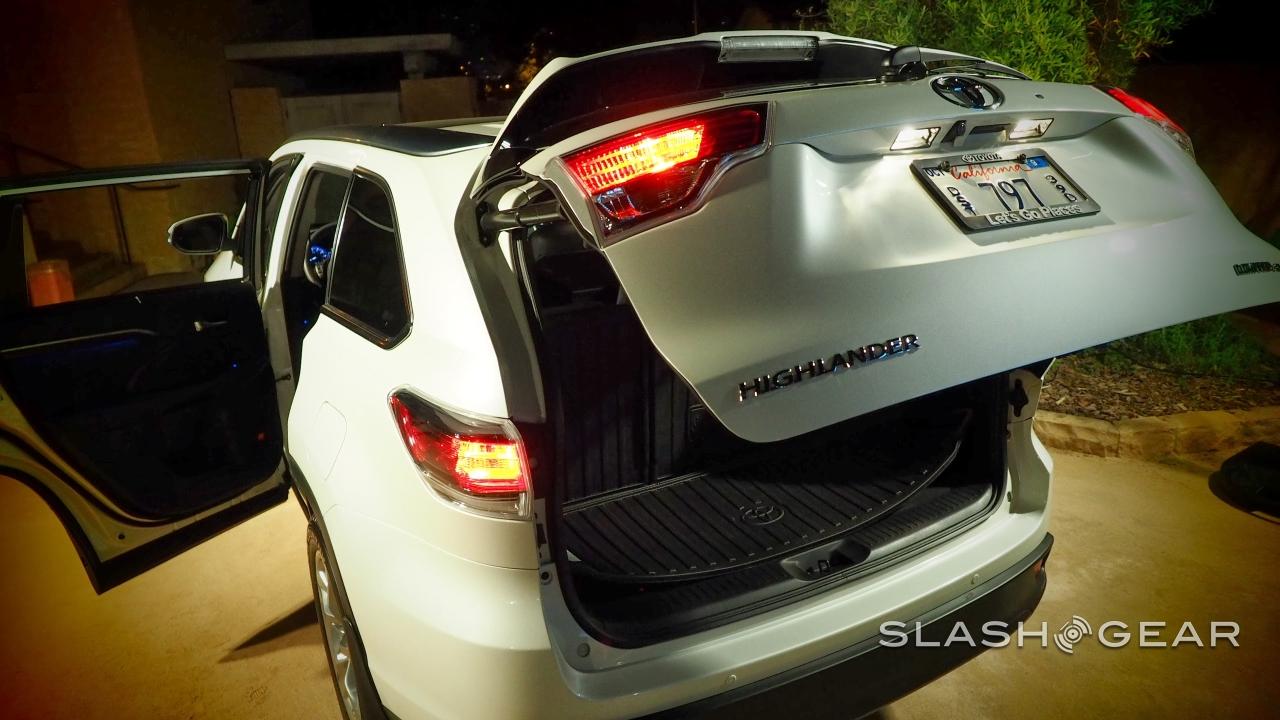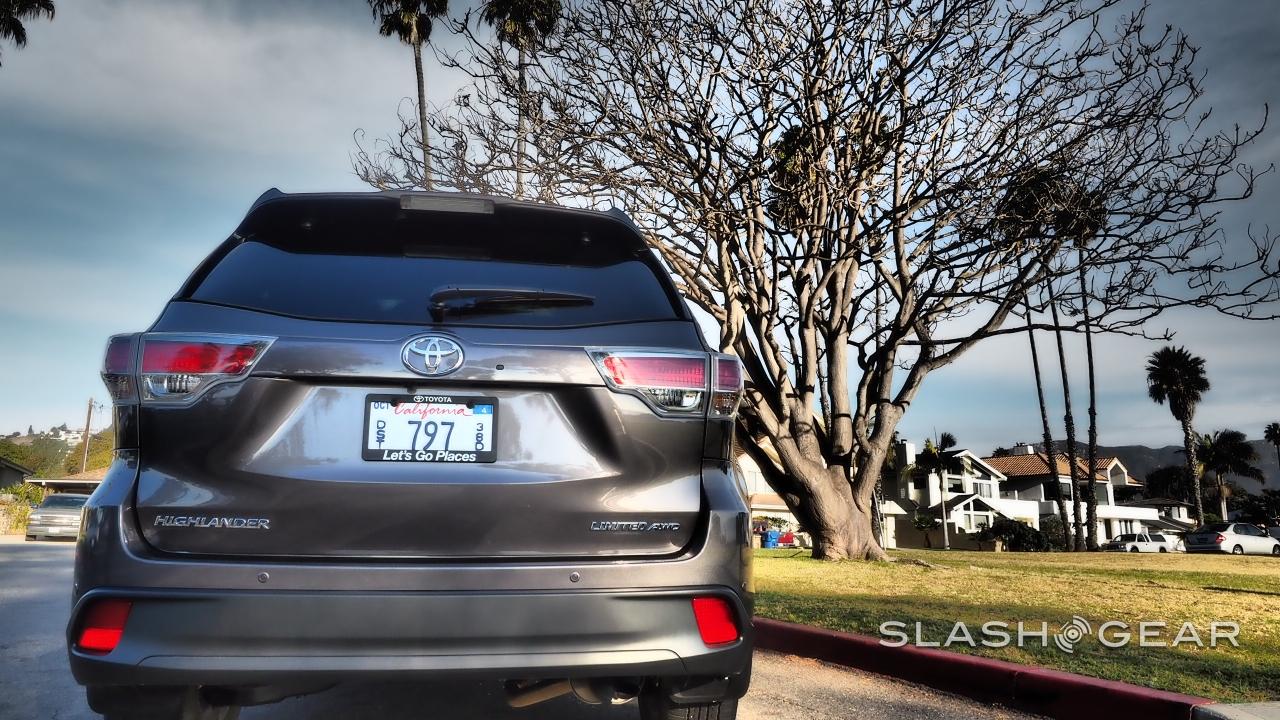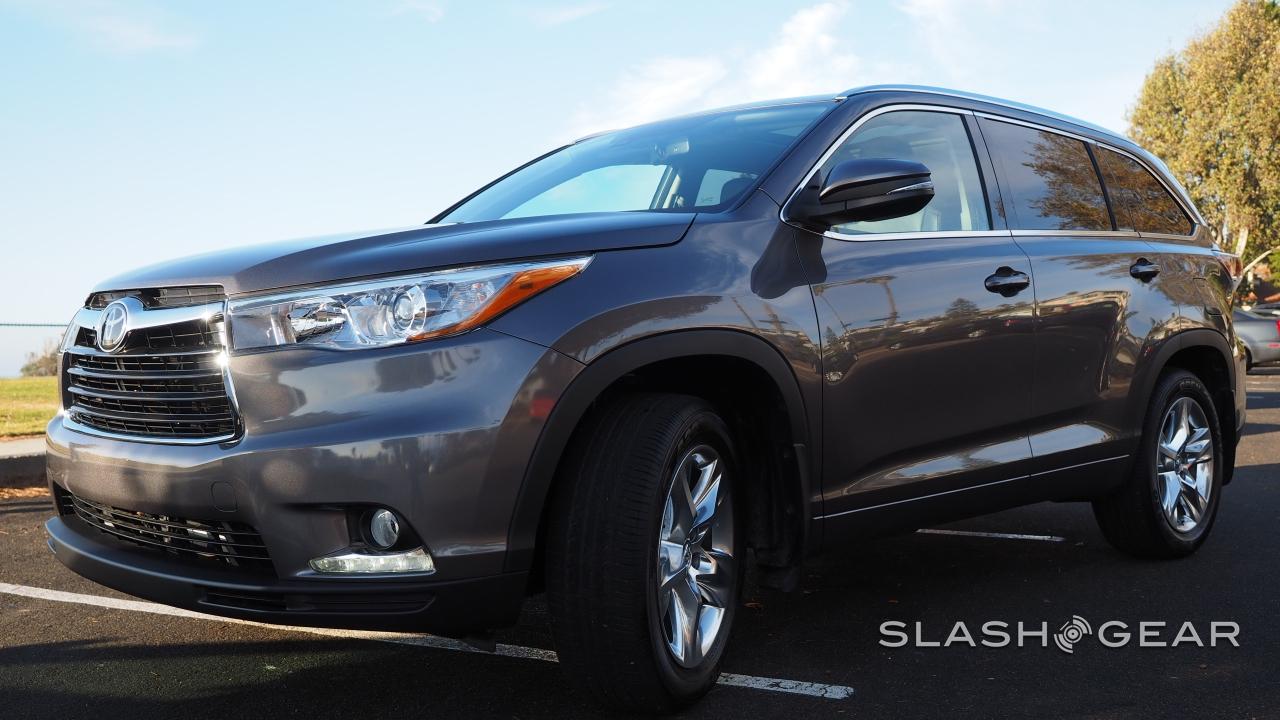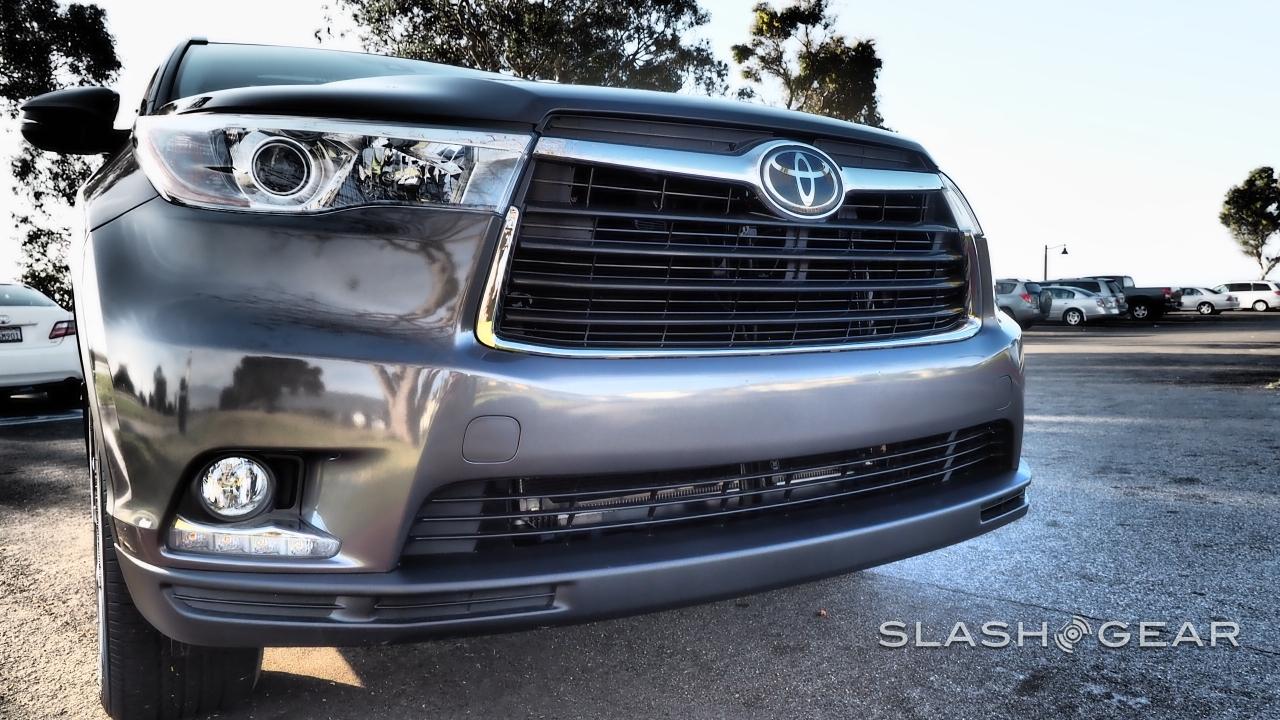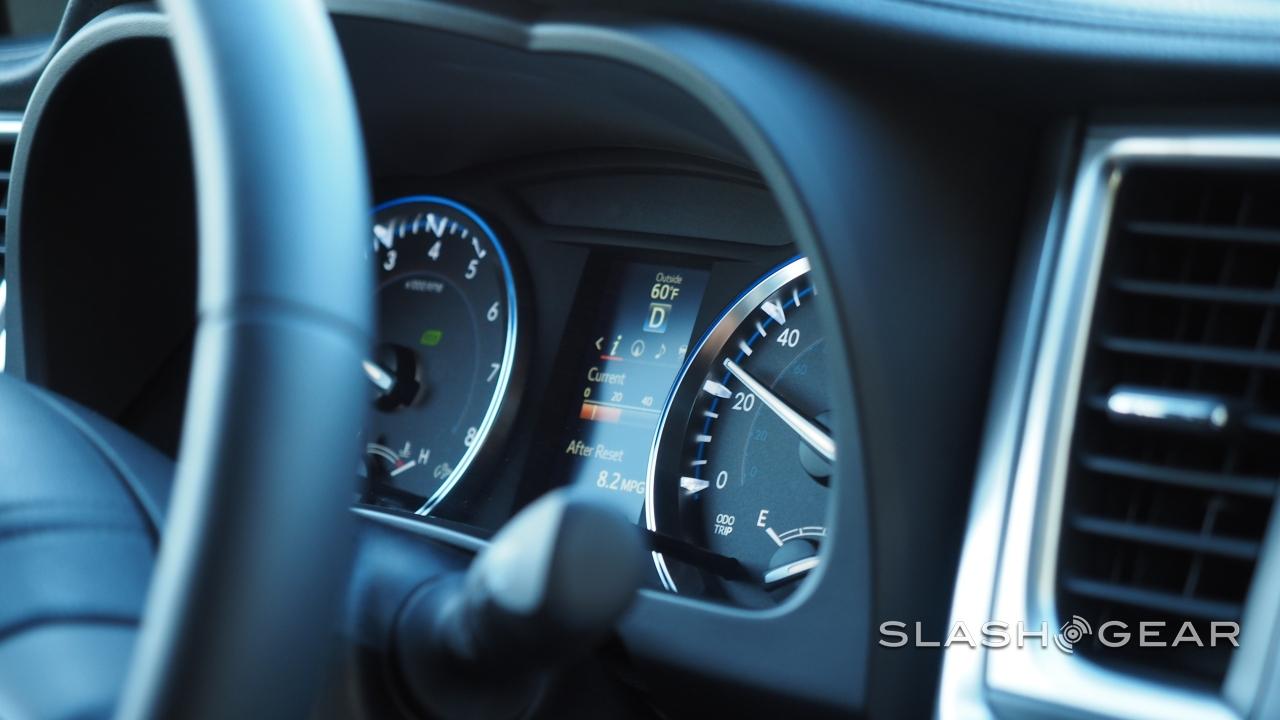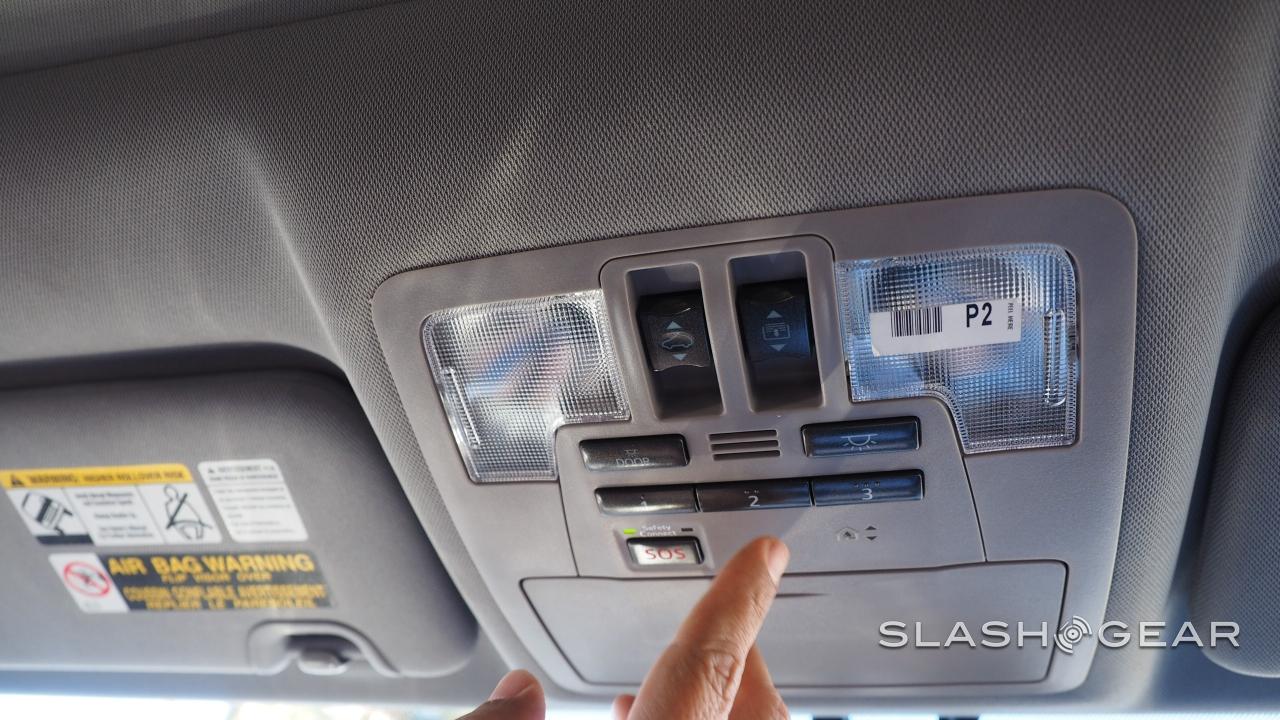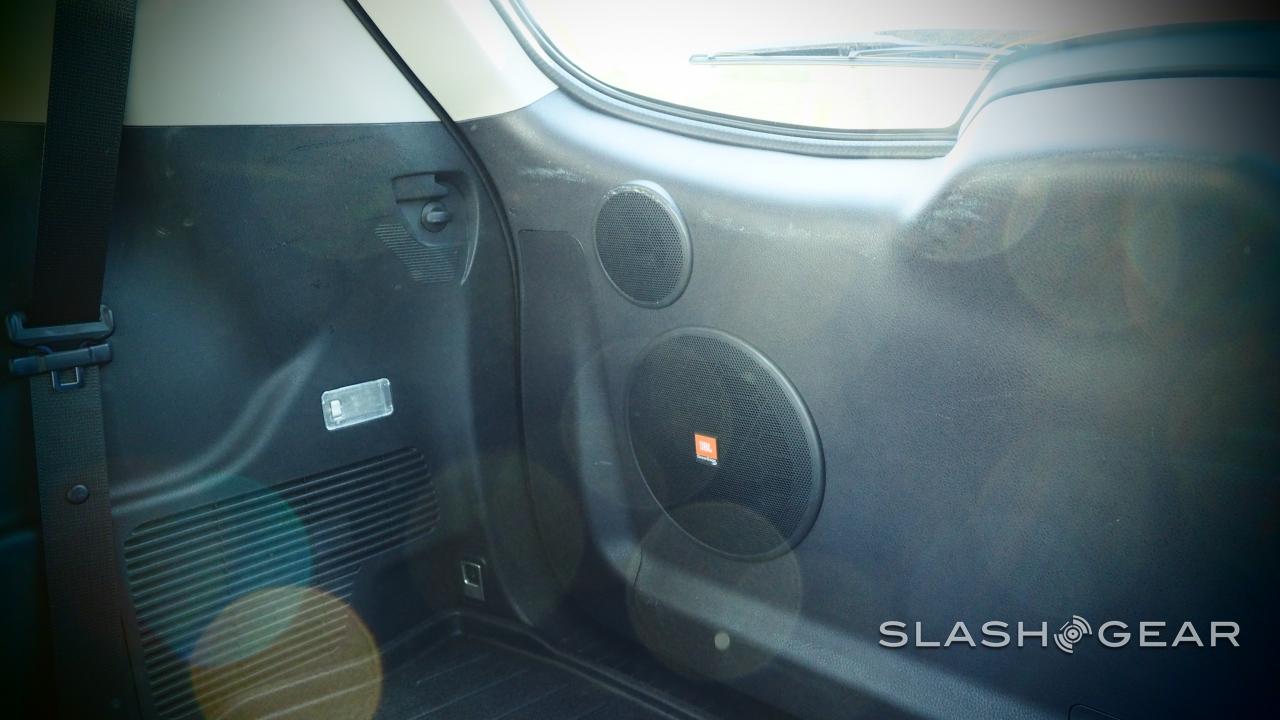2014 Toyota Highlander First Drive
Making a big SUV that satisfies every driver is difficult. Do you make it sporty, or edgy, or aim for super-comfort, or as capacious as possible, or some combination of all of the above? With the 2014 Highlander, Toyota had to work with the reliable-but-staid reputation of its predecessor and inject both some dynamism and an extra seat, as well as crank up the comfort levels so as to compete in what's become an increasingly competitive segment. It takes more than an angry new face to satisfy demanding families, so does the new Highlander offer enough? We grabbed the keys to find out.
Exterior
The 2013 Highlander was hardly memorable, erring on the side of sturdiness instead. The 2014 Highlander addresses that in spades, most noticeably at the front, where a trapezoidal grille and an aggressively curved chrome line gives the SUV an almost frowning appearance. The tighter detailing continues round the side, with sharper crease lines along the shoulders and surfacing that's more reminiscent of Lexus' RX than the wardrobe-on-wheels blockiness of the old model.
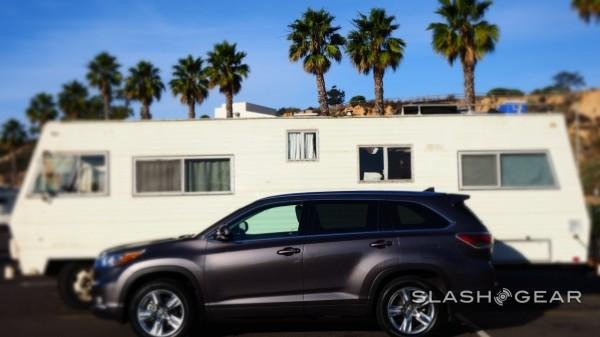
It's a bigger car, too, gaining around three inches in length and sitting a little broader, too; Toyota has used that expansion wisely, boosting the number of seats so that, in regular form at least, the newest Highlander is an eight-seater.
At the back there's a wide tailgate that, on LE Plus spec levels and above, is power assisted. You can also program it where to stop, whether that be to avoid a low garage ceiling or simply to help you reach it. The same trim level gets a separately opening rear window for loading smaller items.
Meatier fenders give the 2014 Highlander a more distinctive stance both on the road and parked up, and the 18-inch standard-fit alloy wheels look suitably sure-footed. Toyota hasn't gone too overboard on the chrome, either, with edging around the side windows but not too much across the grille.
Interior
Just as on the outside, the old Highlander was reliable but uninspiring on the inside, with more than its fair share of harder plastics that were beginning to look cheap in comparison to rivals. The 2014 model addresses that for the most part: for a start, the dashboard is more distinctive, with a combination of black and beige plastic separated by matte-finish silver.
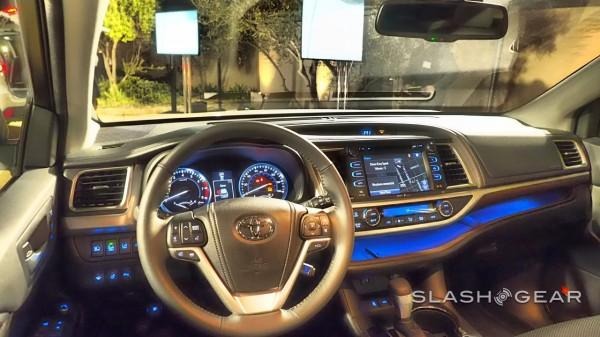
A huge cargo shelf spans the dash from center stack and right across the passenger side, while there's considerably more storage in the middle between the driver and passenger seats. Most of the places your hands will end up touching with any degree of regularity are now soft-touch and textured, though there are still a few shiny, hard points we found.
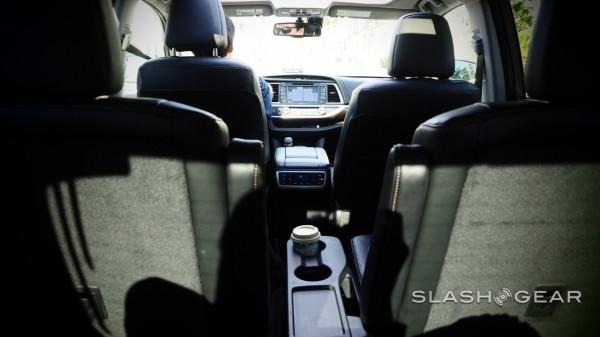
Still, Toyota has clearly thought through how families will use the 2014 Highlander, and there are neat touches galore. The center shelf, for instance, has holes to pass through phone cables for charging or hooking up to the infotainment unit, keeping cords out of the way, One option for keeping the rear row in check pipes audio from a microphone up front through the back speakers, ideal for when you've spotted misbehavior in the fold-down mirror.
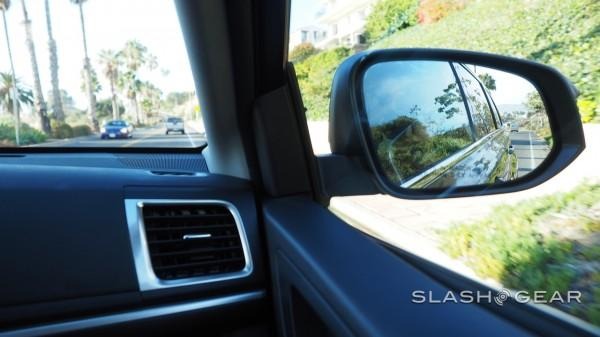
Standard to the middle row is a three seat bench, with a slightly more cramped version for the third row. Alternatively, you can swap the middle seating for a pair of individual captain's chairs; they come standard on the top-spec Limited versions. Access to the very rear-most bench is courtesy of one-touch drop down second row seats on either side, with the wide door openings making clambering through not quite the embarrassment it can be on some SUVs.
If there's a compromise to be made for the extra accommodation, its how much of everyone's luggage you can carry in the trunk. Toyota trimmed down the rear suspension and made the back of the Highlander broader, but the three-seater bench takes up some of what space was freed up, leaving 13.8 cubic feet to play with.
That's more than the 2013 Highlander, which only just crept over the 10 cubic feet point, but still smaller than what rivals like the Ford Explorer offer.
With the dual moon-roof option on our test car, the interior was bright and airy for passengers even at the very back (though the third row is definitely more suited to kids than adults). All the seats are comfortable, even over extended periods, and Toyota has improved the sound insulation too, with a noticeable cut in noise versus the previous model.
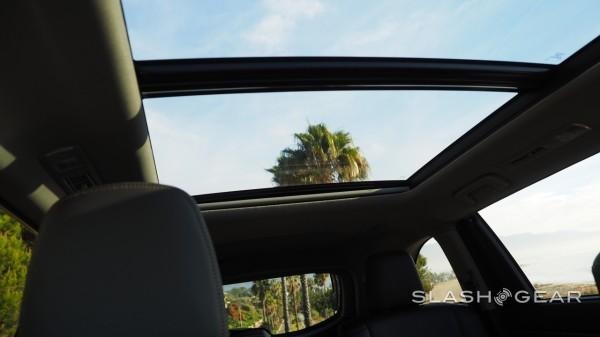
There are a few different versions of the infotainment system to choose between, depending on overall spec level. Entry-level Highlanders get a 6.1-inch touchscreen in the center stack, along with Bluetooth for streaming and hands-free, USB and aux-in, and voice control triggered by a button on the wheel. Step up to the Plus version and you get a higher-resolution display along with satellite radio and HD Radio.
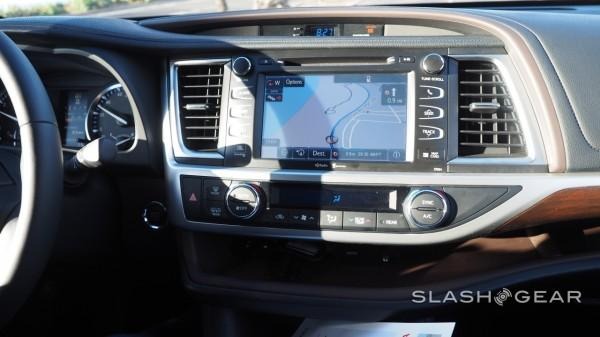
Finally, there's the Entune Premium Audio system, on XLE trim and above, which boosts the touchscreen to 8-inches and throws in navigation and support for Toyota's Entune app. That allows you to access services like Facebook, Pandora, and Yelp through the infotainment system, albeit to a cut-down degree to suit on-the-road use. Entune has evolved into one of the better options among car manufacturers, though the flexibility depends on what smartphone platform you're using: Android phones can hook up wirelessly using Bluetooth, but iPhones need a wired connection, for instance.
Engine and Performance
Toyota has three engine options for the 2014 Highlander, though it already knows which is likely to be most popular. Cheapest is the 2.4-liter, 185HP four-cylinder, with front-wheel drive, though Toyota expects most to go for the 3.5-liter, 270HP V6. A new hybrid is on offer for 2014, pairing the V6 with a trio of electric motors for a total of 280HP.
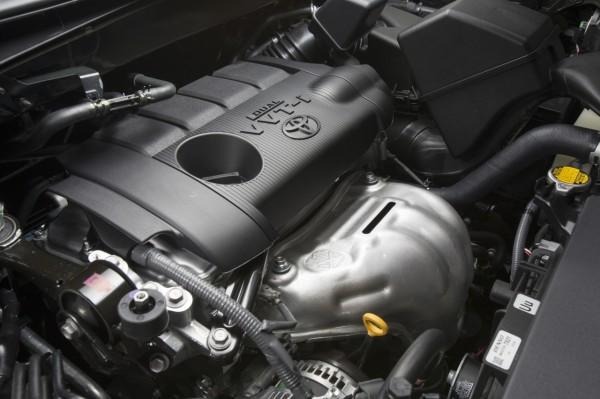
That's a minor increase over the regular V6, true, but Toyota claims it comes with a neat bump in economy. The four-cylinder is rated for 22mpg combined and is only available with front-wheel drive (FWD), while the Hybrid-V6 is expected to get around 28mpg combined, and comes only in all-wheel drive (AWD). In-between slots the regular V6, rated for 21mpg in FWD form and 20mpg in AWD form.
Toyota has tried to pair the aggressive styling with a more sporty feel on-road, with mixed results. We spent the majority of our time in the V6, which has tauter suspension than the outgoing version, and promises to deliver more road-feel through the wheel. On a smooth road that pays dividends, but load the car up and you start to feel more tarmac imperfections than we'd prefer. It can also get a little uncomfortable for those at the back, swinging the Highlander around leaving its overall size clear.
In fact, the 2014 Highlander works much better if you treat it as a capable cruiser. Power delivered through the six-speed automatic – gaining a ratio over last year's model – is smooth and consistent, rather than punchy, easily capable of overtaking at highway speeds without a confused flurry of gear-changes.
Most of the time the AWD model feeds its torque to the front wheels, for better on-road dynamics, only bringing the rear wheels into play if Toyota's computers figure you're losing traction. The brakes are particularly impressive, hauling the SUV to a halt with no problems.
Toyota has been pushing the tech on its recent cars, and the Highlander benefits from that focus on gadgetry. That includes blind-spot warnings, sensors that flag up cross-traffic, and lane-departure sensors, while there are a total of eight airbags spread around the interior. Exactly which of the sensors you get is dependent on which trim level you splash out on – LE, LE Plus, XLE, and Limited – though all versions get a near-essential reversing camera.
Wrap-Up
Toyota kick-starts the 2014 Highlander range off at $30,075 for the four-cylinder LE, though we'd recommend hopping up to the $31,380 entry-level V6 at the very least. If you want the Hybrid-V6, meanwhile, you're looking at $48,160, which is edging firmly into Lexus hybrid territory; we'd have to really need all those seats in order to opt for the Highlander instead.
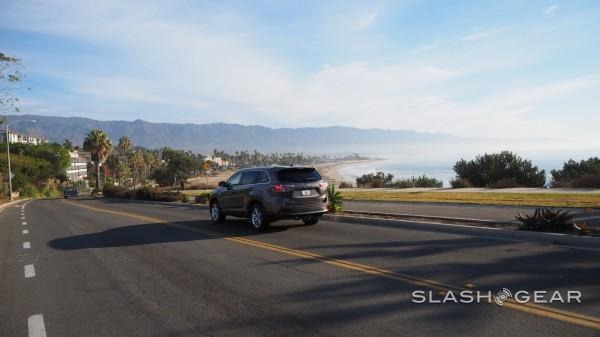
A fully-loaded V6 Limited is around $42,000 with the AWD option and the full gamut of sensors and toys, while the still healthily-equipped XLE is around $38,400. That gets you three zone climate control, keyless entry, heated front seats, and the navigation option for the Entune infotainment. It's probably the model we'd most recommend.
Overall, the new Highlander is a solid all-round improvement on its predecessor. The updated design is more memorable and more striking, while the new gearbox adds to the on-road abilities, even if Toyota is trying to squeeze in more sports performance from the SUV's dynamics than the rear row of passengers might prefer. It's a much better place to be inside, too, though the 4Runner should probably still be your pick if you want more road presence and some semblance of off-road capabilities.
Nonetheless, the 2014 Highlander does what it needs to: boost the seats to take on rivals, and finesse the overall package to keep all eight of them comfortable and safe. It's in Toyota showrooms now.

